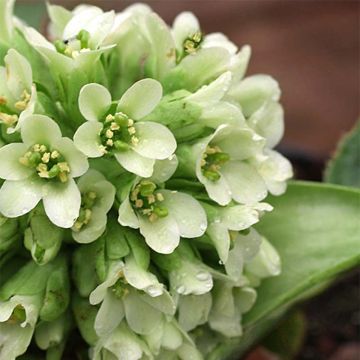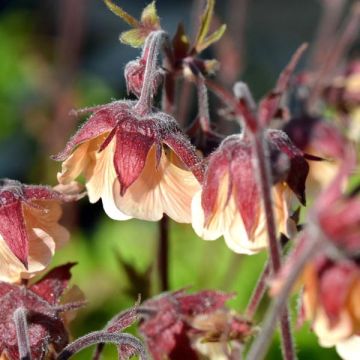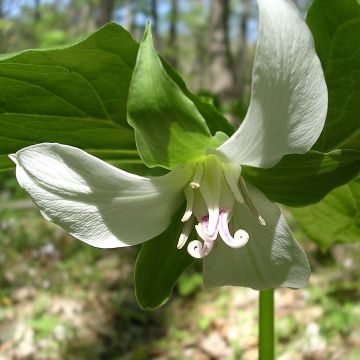

Bergenia collection
Bergenia collection
Bergenia Abendglut, Baby Doll, Bressingham White
Elephant's Ears, Elephant-eared Saxifrage, Large Rockfoil
This item cannot be shipped to the selected country
Delivery charge from €5.90
More information
Schedule delivery date,
and select date in basket
This plant carries a 12 months recovery warranty
More information
We guarantee the quality of our plants for a full growing cycle, and will replace at our expense any plant that fails to recover under normal climatic and planting conditions.
From €5.90 for pickup delivery and €6.90 for home delivery
Express home delivery from €8.90.
Does this plant fit my garden?
Set up your Plantfit profile →
Collection items (3 plants)
Description
This collection of 3 bergenias or elephant's ears plants brings colour to the garden all year round, even in shady areas. These small, ground-covering perennial plants over time have a fleshy and glossy, green to purplish foliage depending on the plant, which is decorative even in winter. In spring, between April and early June, beautiful clusters of white, soft pink or dark pinkish-purple bell-shaped blooms appear, depending on the variety. Plant this collection in your borders, rockeries, and pots, as ground cover, preferably in non-scorching sun.
The collection consists of:
- 1 x Bergenia hybrid 'Abendglut': a variety with medium to dark green leaves on the upper side with a ruby red underside, turning brown in winter. Semi-double flowers, magenta pink to purple pink on red-brown stems in April-May.
- 1 x Bergenia hybrid 'Baby Doll': heart-shaped, greenish-blue leaves throughout the year. Single flowers in delicate pastel pink in April-May.
- 1 x Bergenia hybrid 'Bressingham White': large, robust, wide, deep green leaves even in winter. A very floriferous variety, producing an abundance of pure white flowers with a pink heart in May-June. An RHS award-winning variety in England.
As hardy as their cousins with large leaves planted by our grandmothers, these hybrid bergenias can be used to edge a border, enhance a semi-shaded rockery, but also in a beautiful container on the terrace or balcony. Not demanding, these small perennials thrive in any well-prepared and loosened, compost-enriched soil, in a not too arid location. In the garden, aim to plant 5 plants per m² to cover the ground within 3 or 4 years. Planting can be done from March to May or from October to December, outside the frost period.
Bergenia thrive at the base of deciduous bushes that allow the winter sun to shine through but protect them from its summer heat. They can be combined with partial shade with perennial geraniums (Geranium macrorrhizum), or 'cowslip' primroses, and in the understory of barrenworts, oriental hellebores, hepatica with unbelievably blue flowers.
Report an error about the product description
Flowering
Foliage
Plant habit
Botanical data
Bergenia
Abendglut, Baby Doll, Bressingham White
Saxifragaceae
Elephant's Ears, Elephant-eared Saxifrage, Large Rockfoil
Cultivar or hybrid
Other Bergenia
Planting and care
Bergenia will grow well in most soils, but a humus-rich (leaf compost) and slightly moist soil is preferable. Dry soils, if tolerated, tend to stunt the plant's growth. It will thrive in partial shade or sunny locations, but not in scorching sun: dense shade, where it does not flower, and intense sun should be avoided. Cold weather and poor soil will enhance its colours. Clumps can be planted in spring or autumn, spacing the plants 40 to 50 cm (16 to 20in) apart. To propagate, rhizomes can be divided at the end of winter. While a good fertiliser is beneficial for the growth of this plant, care should be taken not to over-enrich the soil with nitrogen to facilitate flowering. Remove all faded leaves in spring, and apply balanced fertiliser after flowering to promote new shoots.
Watch out for slugs and snails in spring.
Bergenia are not averse to snow. In nature, this plant only grows where snow is abundant in winter, as it provides excellent protection for the foliage.
Planting period
Intended location
Care
This item has not been reviewed yet - be the first to leave a review about it.
Spring flowering perennials
Haven't found what you were looking for?
Hardiness is the lowest winter temperature a plant can endure without suffering serious damage or even dying. However, hardiness is affected by location (a sheltered area, such as a patio), protection (winter cover) and soil type (hardiness is improved by well-drained soil).

Photo Sharing Terms & Conditions
In order to encourage gardeners to interact and share their experiences, Promesse de fleurs offers various media enabling content to be uploaded onto its Site - in particular via the ‘Photo sharing’ module.
The User agrees to refrain from:
- Posting any content that is illegal, prejudicial, insulting, racist, inciteful to hatred, revisionist, contrary to public decency, that infringes on privacy or on the privacy rights of third parties, in particular the publicity rights of persons and goods, intellectual property rights, or the right to privacy.
- Submitting content on behalf of a third party;
- Impersonate the identity of a third party and/or publish any personal information about a third party;
In general, the User undertakes to refrain from any unethical behaviour.
All Content (in particular text, comments, files, images, photos, videos, creative works, etc.), which may be subject to property or intellectual property rights, image or other private rights, shall remain the property of the User, subject to the limited rights granted by the terms of the licence granted by Promesse de fleurs as stated below. Users are at liberty to publish or not to publish such Content on the Site, notably via the ‘Photo Sharing’ facility, and accept that this Content shall be made public and freely accessible, notably on the Internet.
Users further acknowledge, undertake to have ,and guarantee that they hold all necessary rights and permissions to publish such material on the Site, in particular with regard to the legislation in force pertaining to any privacy, property, intellectual property, image, or contractual rights, or rights of any other nature. By publishing such Content on the Site, Users acknowledge accepting full liability as publishers of the Content within the meaning of the law, and grant Promesse de fleurs, free of charge, an inclusive, worldwide licence for the said Content for the entire duration of its publication, including all reproduction, representation, up/downloading, displaying, performing, transmission, and storage rights.
Users also grant permission for their name to be linked to the Content and accept that this link may not always be made available.
By engaging in posting material, Users consent to their Content becoming automatically accessible on the Internet, in particular on other sites and/or blogs and/or web pages of the Promesse de fleurs site, including in particular social pages and the Promesse de fleurs catalogue.
Users may secure the removal of entrusted content free of charge by issuing a simple request via our contact form.
The flowering period indicated on our website applies to countries and regions located in USDA zone 8 (France, the United Kingdom, Ireland, the Netherlands, etc.)
It will vary according to where you live:
- In zones 9 to 10 (Italy, Spain, Greece, etc.), flowering will occur about 2 to 4 weeks earlier.
- In zones 6 to 7 (Germany, Poland, Slovenia, and lower mountainous regions), flowering will be delayed by 2 to 3 weeks.
- In zone 5 (Central Europe, Scandinavia), blooming will be delayed by 3 to 5 weeks.
In temperate climates, pruning of spring-flowering shrubs (forsythia, spireas, etc.) should be done just after flowering.
Pruning of summer-flowering shrubs (Indian Lilac, Perovskia, etc.) can be done in winter or spring.
In cold regions as well as with frost-sensitive plants, avoid pruning too early when severe frosts may still occur.
The planting period indicated on our website applies to countries and regions located in USDA zone 8 (France, United Kingdom, Ireland, Netherlands).
It will vary according to where you live:
- In Mediterranean zones (Marseille, Madrid, Milan, etc.), autumn and winter are the best planting periods.
- In continental zones (Strasbourg, Munich, Vienna, etc.), delay planting by 2 to 3 weeks in spring and bring it forward by 2 to 4 weeks in autumn.
- In mountainous regions (the Alps, Pyrenees, Carpathians, etc.), it is best to plant in late spring (May-June) or late summer (August-September).
The harvesting period indicated on our website applies to countries and regions in USDA zone 8 (France, England, Ireland, the Netherlands).
In colder areas (Scandinavia, Poland, Austria...) fruit and vegetable harvests are likely to be delayed by 3-4 weeks.
In warmer areas (Italy, Spain, Greece, etc.), harvesting will probably take place earlier, depending on weather conditions.
The sowing periods indicated on our website apply to countries and regions within USDA Zone 8 (France, UK, Ireland, Netherlands).
In colder areas (Scandinavia, Poland, Austria...), delay any outdoor sowing by 3-4 weeks, or sow under glass.
In warmer climes (Italy, Spain, Greece, etc.), bring outdoor sowing forward by a few weeks.



























































